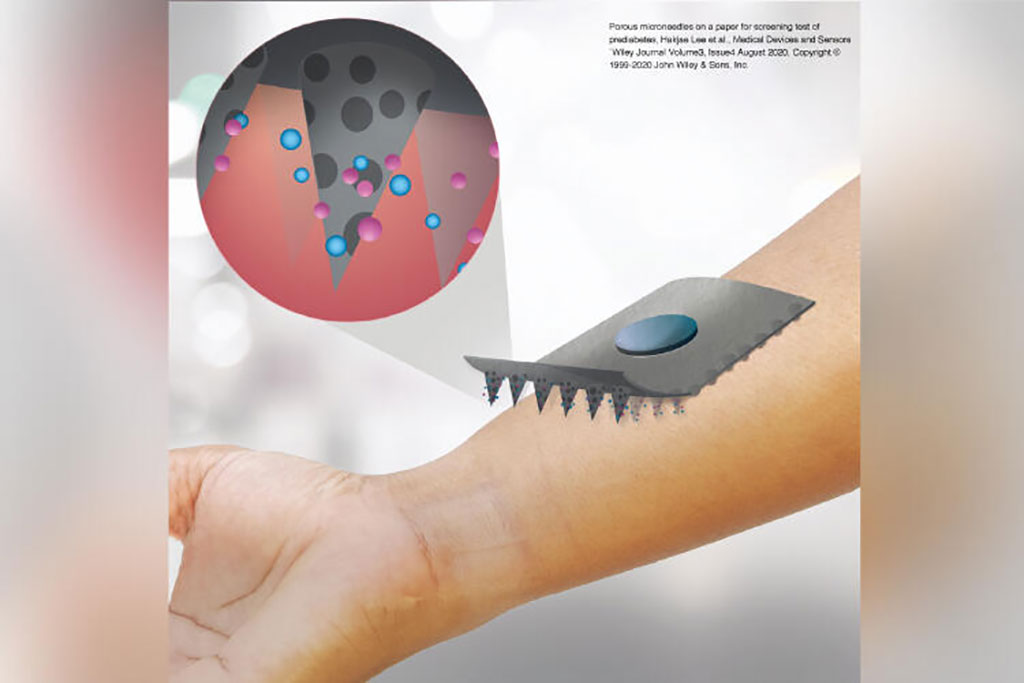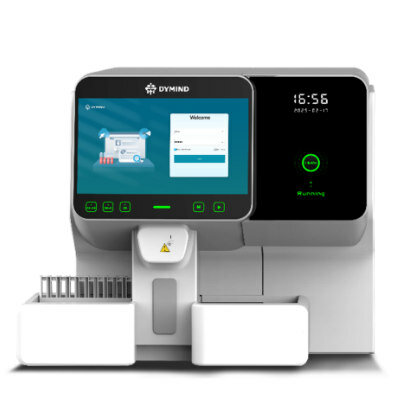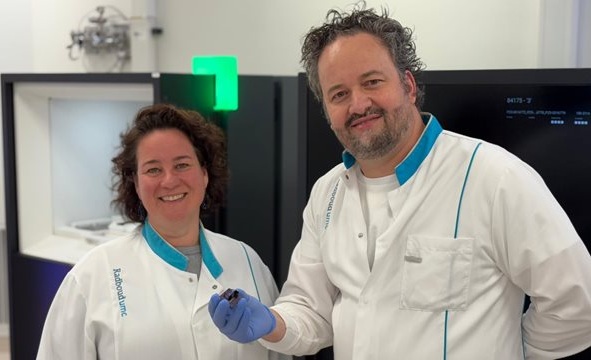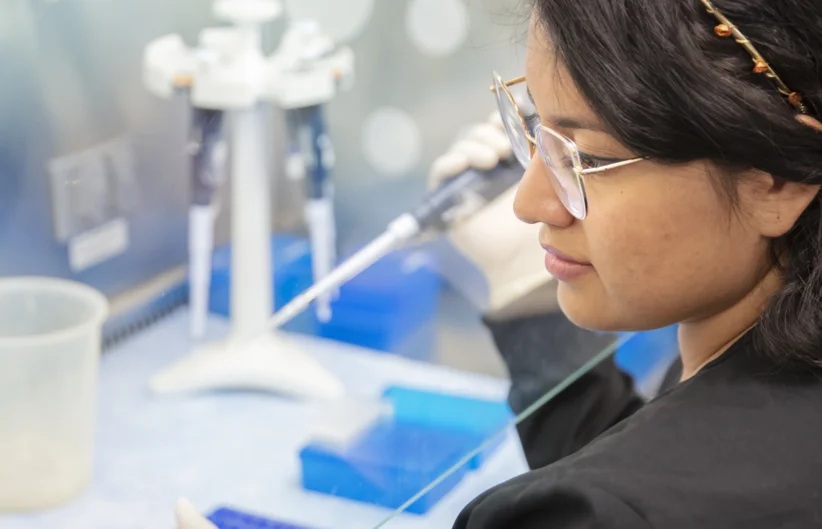Paper-Based Microneedle Skin Patch for Continuous Glucose Monitoring
By LabMedica International staff writers
Posted on 23 Sep 2020
A microneedle skin patch for the continuous monitoring of an individual’s glucose level was designed to be a painless and disposable screening and diagnostic test for diabetes patients, as well as those with pre-diabetes.Posted on 23 Sep 2020
Porous microneedles are expected to have a variety of potential applications in diagnostics owing to their ability to penetrate human skin painlessly and extract bio‐fluid by capillary action. Investigators at the University of Tokyo (Japan) have applied this technology for screening and monitoring levels of glucose.

Image: Illustration demonstrating painless and biodegradable microneedles on a paper patch (Photo courtesy of University of Tokyo)
The microneedles were fabricated by pouring a mixture of a melted biodegradable polymer and salt into the cone-shaped cavities of a micro-mold while applying heat. The mold was then inverted with the needles on the lower side, and the device was placed on top of a sheet of paper with high pressure applied from above. The high pressure forced the polymer mixture into the pores of the paper, securing the attachment and allowing fluid drawn through the needles to pass effortlessly into the paper. After removal from the mold, the needles were cooled in a solution that removed the salt, leaving behind pores, through which fluid could flow into the paper. A paper glucose sensor was then attached to the paper base of the needle array. The final product was disposable and biodegradable, and its use did not require any medical expertise or training.
The paper‐based glucose sensor was used to demonstrate the absorption property of the microneedles, and showed successful sample extraction and glucose concentration analysis from agarose gel‐based skin mimics. The investigators maintained that the platform had the potential to integrate various different paper‐based bio‐sensors in order to function as painless and disposable rapid screening and diagnostic tests for many metabolites.
"We have overcome this problem by developing a way to combine porous microneedles with paper-based sensors," said senior author Dr. Beomjoon Kim, professor in the institute of industrial science at the University of Tokyo. "The result is low-cost, disposable, and does not require any additional instruments."
The microneedle device was described in the August 2020 issue of the journal Medical Devices & Sensors.
Related Links:
University of Tokyo














